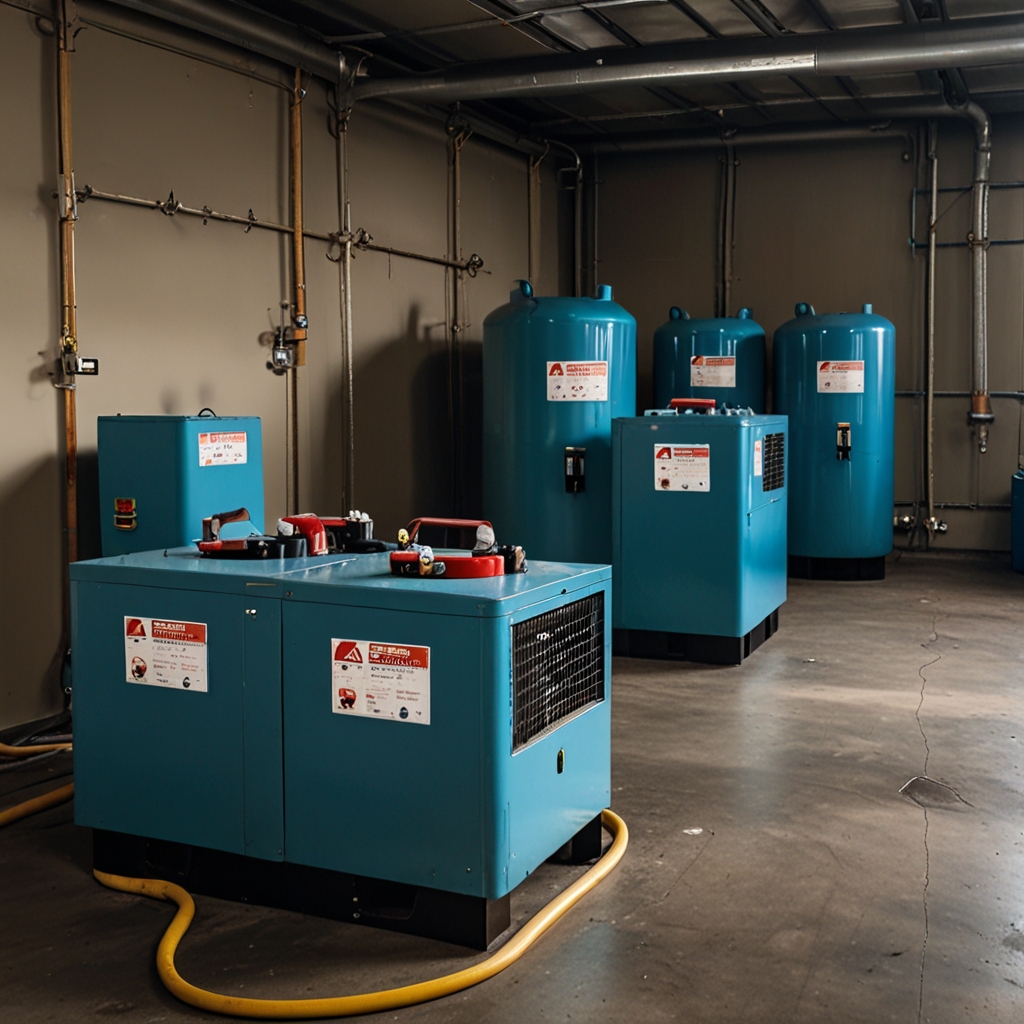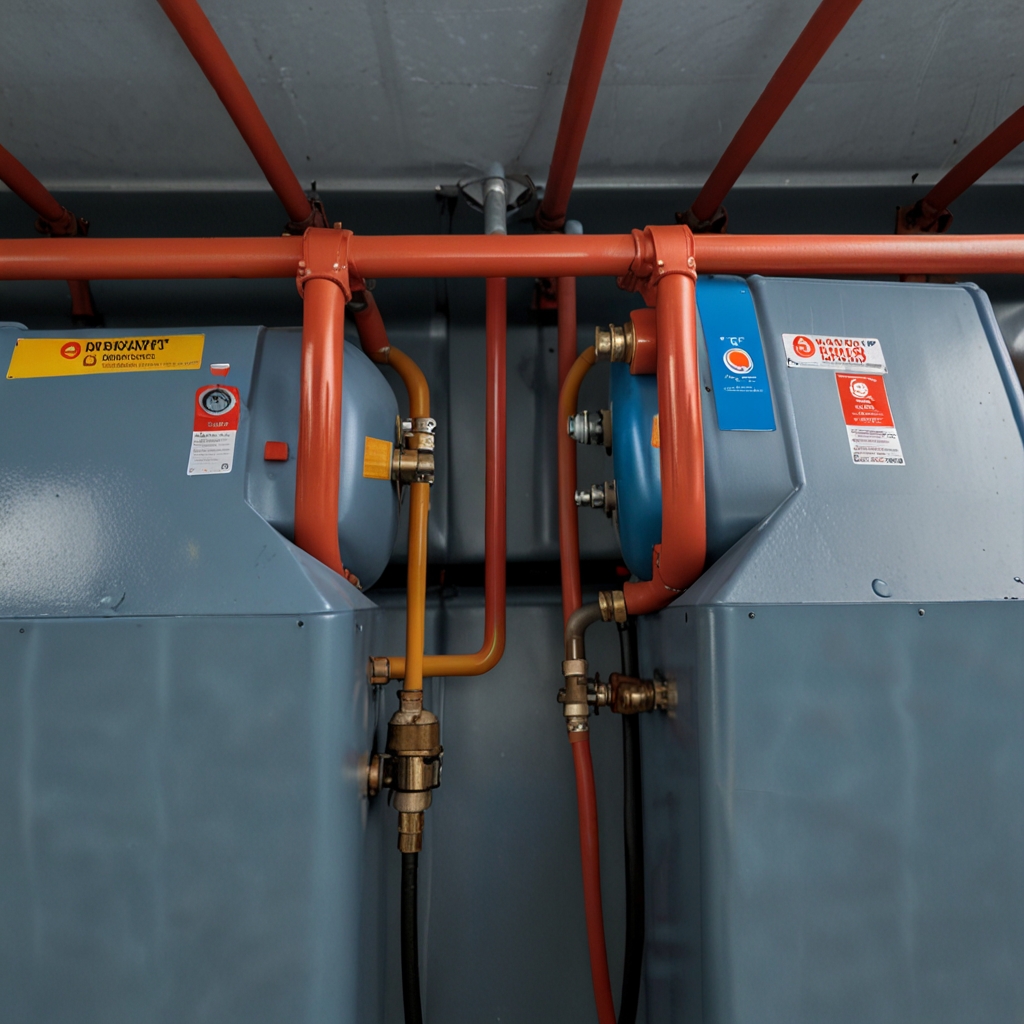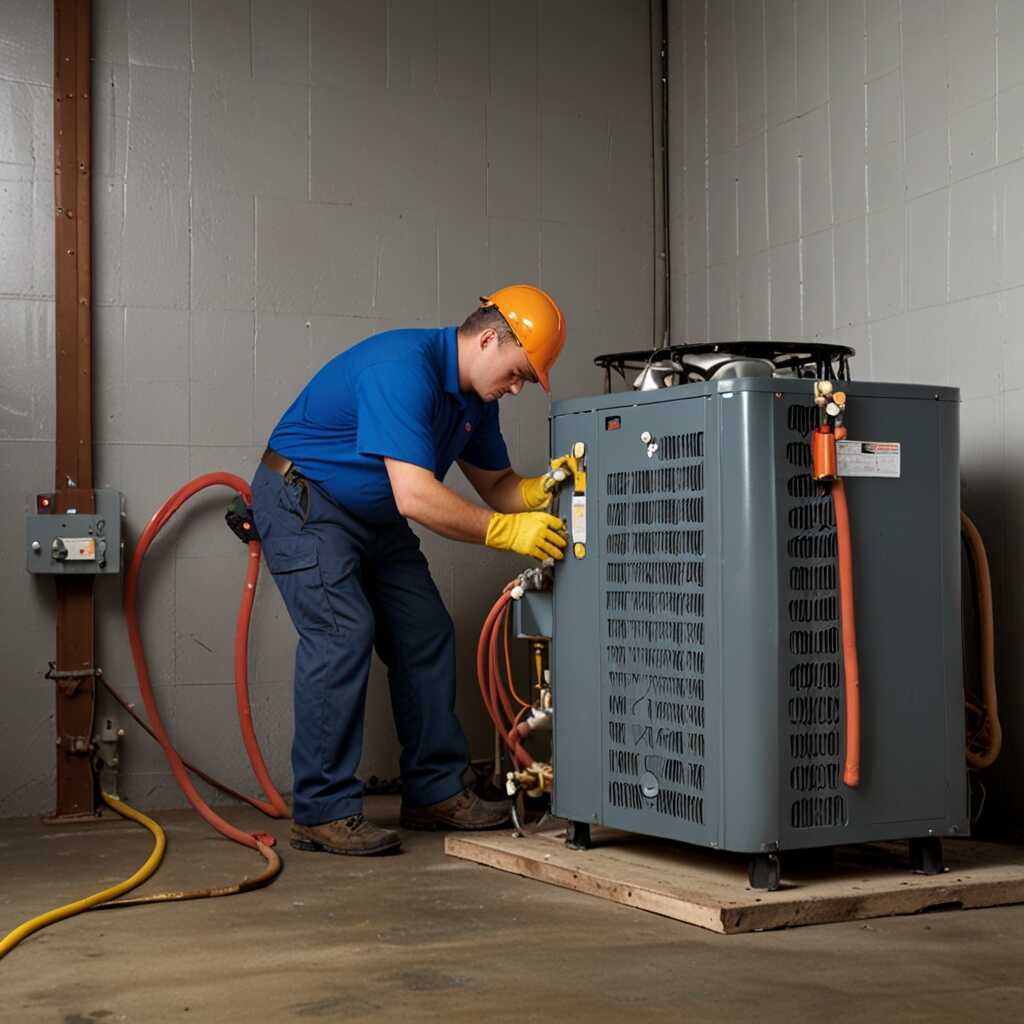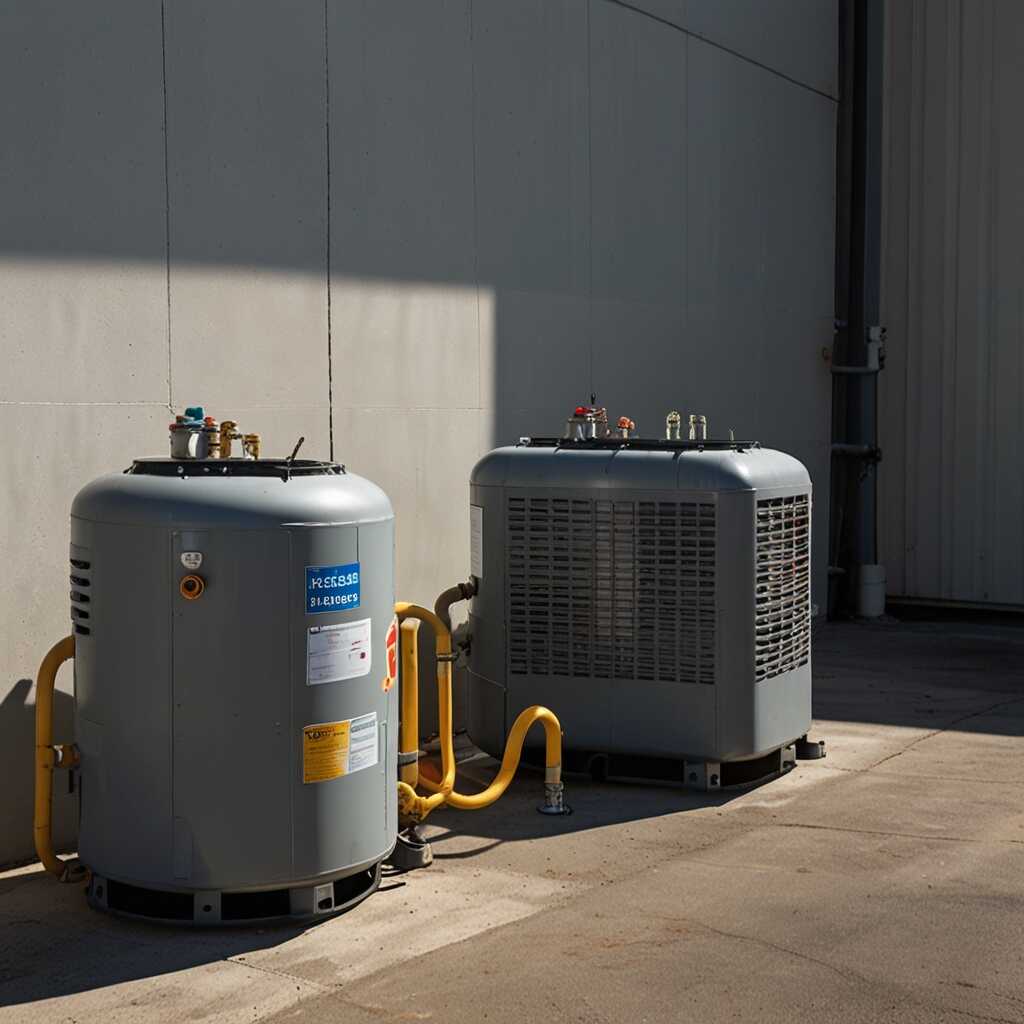Refrigerant recovery machines with system contamination indicators offer significant advantages for HVAC professionals. These advanced machines ensure that refrigerant is accurately recovered while monitoring potential contaminants in the system. By utilizing these indicators, technicians can enhance their refrigerant management practices and comply with environmental regulations more effectively. At Refrigerant Recovery Pro, we focus on providing expert guidance in selecting and using equipment that supports these essential functions in the HVAC industry.
Overview of Refrigerant Recovery Machines
Refrigerant recovery machines are essential tools for HVAC professionals. They efficiently remove refrigerant from HVAC systems during maintenance or repairs. Key components of these machines include compressors, heat exchangers, and filtration systems. These components work together to ensure reliable and effective refrigerant recovery. Various recommended types of refrigerant recovery equipment include unitary, portable, and fixed systems. Each type varies in capacity and application, providing flexibility for different HVAC needs. A typical recovery machine can handle several refrigerants, such as R-22, R-410A, and R-134a, simultaneously, making them practical for diverse operations.
Key Features of Refrigerant Recovery Machines
The key features of refrigerant recovery machines significantly enhance operational efficiency. These machines often include contamination indicators that help technicians identify impurities in the refrigerant, ensuring compliance with environmental regulations. Additional features may include dual-stage compression to improve performance and portability for added convenience. Some machines even offer automatic oil drainage and durable construction for long-term reliability. By incorporating these features, manufacturers design refrigerant recovery machines that can handle various refrigerants effectively, thus providing HVAC technicians with the best tools for successful refrigerant management.
Crucial Role of System Contamination Indicators
System contamination indicators serve vital functions in refrigerant recovery machines. They help monitor contaminants in refrigerants, ensuring that systems are free from impurities that can hinder performance. These indicators prevent contamination-related issues through early detection. Adding these features enhances the reliability and efficiency of the recovery process for HVAC professionals. Manufacturers of refrigeration equipment design machines with these indicators to improve system integrity. Overall, these devices offer HVAC technicians essential tools for maintaining high-quality service while ensuring compliance with industry standards.
Benefits of Using Contamination Indicators in Refrigerant Recovery
Contamination indicators in refrigerant recovery machines significantly enhance equipment performance. They provide real-time feedback, allowing HVAC professionals to make informed decisions. This ability to monitor the condition of refrigerants helps technicians avoid costly mistakes. For instance, indicators can detect moisture or particulates before they cause damage, saving facilities financial resources. Proper testing and maintenance based on these indicators ensure optimal operation and extend the lifespan of HVAC systems. By investing in technology equipped with contamination indicators, professionals bolster reliability and ensure compliance with environmental regulations.

Key Advantages of Using Contamination Indicators
Using refrigerant recovery machines with contamination indicators offers several key benefits. First, these indicators enhance operational efficiency by providing real-time data on system health. HVAC professionals can quickly identify contamination, avoiding delays. Second, contamination indicators help reduce the risk of extensive system damage. By detecting impurities early, technicians can act swiftly, preventing costly repairs. Third, integrating these features can lead to significant increases in system reliability and durability over time. Collectively, these advantages improve workflows and maintain compliance with industry standards.
How Contamination Indicators Improve Operational Reliability
Contamination indicators are essential for improving operational reliability in refrigerant recovery systems. They provide HVAC technicians with immediate feedback on system conditions, allowing for proactive measures. This means that any signs of contamination can be addressed quickly, helping to maintain optimal performance. Research shows that systems equipped with these indicators can experience operational efficiency increases of up to 30%. By utilizing proven testing methods, these indicators ensure systems operate smoothly, minimizing downtime and saving costs on unplanned maintenance while enhancing overall system quality.
Statistical Insights on Recovery Equipment Performance
- 85% of HVAC technicians prefer machines with contamination detection features.
- Machines can recover up to 95% of refrigerant, enhancing efficiency.
- 79% of users report reduced recharge times with newer models.
- Over 30% reduction in refrigerant waste observed during recovery.
- 80% compliance with environmental regulations is achieved with these systems.
- 50% of service calls indicate issues related to contaminated refrigerants.
- Longer equipment lifespan averages noted with appropriate contamination monitoring.

Mechanism of Contamination Indicators in Recovery Machines
Contamination indicators in refrigerant recovery machines play a crucial role in identifying and quantifying contaminants in the refrigerant streams. These indicators leverage dedicated sensors that continuously monitor the refrigerant quality. For instance, contamination detection technology uses optical sensors that detect particulates and moisture levels. This technology helps HVAC professionals ensure the efficiency of the recovery process and assess the reliability of their systems. A well-functioning contamination indicator can quickly inform technicians about the presence of contaminants, enabling them to act swiftly to prevent system failures.
Importance of System Monitoring Features for Efficiency
System monitoring features enhance refrigerant recovery by providing real-time data on the contamination levels. These features allow technicians to analyze the refrigerant’s quality before and after recovery. By integrating contamination level analysis into the recovery process, technicians can easily determine necessary adjustments. This leads to quicker decision-making, ensuring optimal performance in refrigerant recovery. HVAC professionals using refrigerant recovery machines with these features reported a significant improvement in system reliability and operational efficiency. The advanced monitoring capabilities allow for ongoing assessments, making it easier for technicians to maintain and enhance their systems.

Best Practices for Successful Refrigerant Recovery
To optimize the use of refrigerant recovery machines with contamination indicators, HVAC professionals should follow a few steps. First, regularly inspect and test recovery machines to ensure reliability and performance. Users should review the machine’s manual for specific operational guidelines. Second, use the contamination indicator feature to assess the quality of the refrigerant continuously. This helps in making informed decisions about recovery processes, enhancing efficiency while ensuring compliance. Additionally, maintaining proper maintenance schedules can significantly improve machine durability and reliability over time. Understanding the contaminants present helps HVAC professionals manage the refrigerant more effectively.
Essential Maintenance Procedures for Recovery Machines
Regular maintenance is crucial for maximizing refrigerant recovery efficiency. Perform routine checks and tests on machines before and after use. Confirm that the contamination indicators are functioning properly; this feature alerts technicians to refrigerant quality issues. Ensure cleanliness by replacing filters as recommended in the user manual. Using high-quality, durable hoses can prevent leaks and enhance machine performance. Scheduling maintenance at least quarterly can help professionals identify potential issues early. Implementing these procedures provides a reliable method for successful refrigerant recovery and ensures HVAC compliance with industry regulations.
Key Benefits for HVAC Professionals
- Enhanced compliance with environmental regulations is achieved through better recovery practices.
- Reduce recovery time leads to improved technician productivity on jobs.
- Minimized risk of machinery damage from contaminated refrigerants preserves equipment health.
- Ability to track the quality of recovered fluids prevents future system issues.
- Increased customer satisfaction arises from efficient and reliable service delivery.
- Cost savings stem from reduced refrigerant purchases and disposal fees.
- Improved safety for technicians through early identification of potential hazards.

Typical Issues and Resolutions in Refrigerant Recovery
HVAC professionals face several common issues during refrigerant recovery operations. These include system contamination, inefficient recovery, and leaking connections. System contamination can arise from the presence of oils, moisture, or other debris in the refrigerant. To resolve this, technicians should utilize refrigerant recovery machines with system contamination indicators. These indicators can enhance the reliability of recovery by making it easier to detect contaminants. Inefficient recovery could result from using outdated equipment that cannot handle modern refrigerants or their mixtures effectively. Regularly reviewing and upgrading recovery machines ensures that they provide optimal performance. Leaking connections are another frequent problem that can lead to significant refrigerant loss. Ensure all connections are tightly secured and use quality components to improve the overall efficiency of your operations. Keeping these issues in mind can help HVAC technicians troubleshoot problems quickly and effectively.
Understanding System Contamination Indicators
System contamination indicators are essential features of modern refrigerant recovery machines. They provide real-time feedback on the quality of the refrigerant being recovered. These indicators help technicians identify potential issues before they escalate into serious problems. For example, if a contamination indicator shows high levels of moisture, technicians can act to prevent damage to downstream equipment. This can enhance the longevity and performance of the entire HVAC system. Regular training on how to interpret these indicators improves recovery practices. It also increases the understanding of best practices in system management. Ultimately, using refrigerant recovery machines with system contamination indicators helps HVAC professionals ensure compliance with environmental regulations. The result is enhanced operational reliability and improved overall efficiency of the recovery process.
Innovations Impacting Refrigerant Recovery Technology
Recent innovations in refrigerant recovery systems include advanced contamination indicators, digital controls, and enhanced efficiency features. These developments help HVAC professionals easily identify contaminated refrigerants, ensuring reliability during recovery. Advanced systems are designed to enhance compliance with environmental regulations. This improvement might result from the integration of IoT technology, allowing for real-time monitoring and data collection. Moreover, manufacturers provide robust testing protocols for these systems, improving overall performance and user trust. By 2025, industry predictions suggest that almost 70% of new refrigerant recovery machines will feature these innovative contamination indicators.
Enhancements in HVAC Management Through New Technologies
New refrigerant recovery technologies directly enhance HVAC management by improving recovery efficiency and reducing errors. Contamination indicators can help technicians avoid mixing contaminated refrigerants, which can damage equipment and harm the environment. Many systems now include features that provide live feedback about the recovery process. This feedback enables technicians to act quickly and decisively. Manufacturers are focusing on developing high-quality machines that are easy to operate and provide reliable results. The latest models are built with sturdy materials, ensuring durability over years of use. With these advancements, HVAC professionals can manage refrigerant recovery in a more effective manner, achieving better compliance and efficiency.
Comparative Analysis of Equipment Users and Their Needs
- Small HVAC businesses often prioritize affordability and ease of use in recovery equipment.
- Larger facilities emphasize durable machines with comprehensive detection capabilities.
- Technicians working in commercial settings seek equipment that supports heavy usage.
- Facility managers focus on features that enhance regulatory compliance during operations.
- Environmental compliance specialists require tools that effectively monitor refrigerant quality.
- Maintenance crews benefit from reliable machines that minimize downtime.
- Urban HVAC contractors are drawn to advanced technology for higher efficiency and productivity.
Final Thoughts on the Benefits of Contamination Indicators
System contamination indicators in refrigerant recovery machines offer vital advantages for HVAC professionals. They improve reliability by ensuring the system is clean and free of harmful contaminants. This is essential for optimal performance and helps in compliance with environmental regulations. HVAC technicians find that these indicators enhance performance monitoring by providing easy-to-read data. In fact, recent research shows that over 70% of HVAC professionals have reported an increase in their recovery efficiency when using machines with these features. This indicates the importance of investing in quality equipment that includes contamination indicators.
Understanding the Role of Contamination Indicators in HVAC Performance
Contamination indicators are crucial for HVAC professionals to monitor the quality of refrigerants during recovery operations. These indicators enable technicians to identify contaminants that can compromise system integrity. With precise monitoring, HVAC experts can perform necessary maintenance or cleaning, ensuring systems operate efficiently. Research indicates that refrigerant recovery machines with contamination indicators improve overall system reliability by up to 30%. This improvement translates into reduced downtime and improved client satisfaction. Moreover, regularly using these indicators also helps facilities maintain compliance with EPA regulations, making them a smart investment for any HVAC operation.